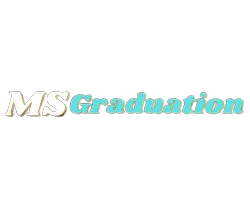[ad_1]
After living in Philadelphia for a few years, I’ve become pretty familiar with taking public transportation, but it’s something that I have to use every single day in Hong Kong. HK has a notoriously sophisticated transportation system that makes every area easily accessible, and I have so many options when it comes to traveling from place to place.
The main mode of transportation is the subway system, the MTR. There are multiple lines that extend to each corner of Hong Kong, from beaches to huge cities to Disney World. Most mornings, I walk 5-10 minutes to the Wan Chai station, then take the MTR straight onto campus (there is literally a station called HKU). The entire trip, which would take an hour to walk, is a short and cheap commute; the MTR comes every few minutes on all lines, and only costs me about HK$2 per ride (less than 50 cents). Compared to SEPTA’s $2.50 fee per ride, the MTR is definitely more cost efficient. It also goes underwater (for example, the Tsuen Wan line extends from HK Island where I live to Kowloon, the piece of HK attached to the mainland) and above ground (for example, the Tung Chung line can take us to further areas such as Lantau Island). Within each MTR station, there are a multitude of 7/11s, bakeries, and even restaurants or clothing stores. (I actually bought a Mrs. Fields cookie on the way to Kowloon last weekend.) The biggest hinderance of the MTR is that it’s not available as much as I want to take it! The trains stop running around 1am, so any late nights require a different method of transportation home.


Luckily, there are tons of buses that run 24/7. There are at least 5 bus stops within five minutes of my apartment, each with 5-10 buses. These are a little more costly (ranging from HK$7-25) and are scheduled less frequently than the MTR, usually with 10 minutes in between, but can offer a more direct route to your destination. Since I live in an accessible and central region on northern HK Island, there are a lot of bus routes directly to my area. For example, it only took a 20 minute bus ride to arrive at Repulse Bay, a beach in the south of HK Island. However, journeying further to an island, New Territories, or the airport will require a combination of the MTR and bus.
When I have a bit more time or want to sightsee a little more, I take the tram. This is the equivalent of a trolley in Philly, but unlike those, the tram is much more widespread across HK and can have multiple lines on a street. It’s definitely a staple of the HK streets, and it’s on many postcards depicting local life. You have to enter through the back door and pay when you get off at the front door. Like the buses, the trams have two floors, but unlike the bus, the top has open windows! The air flow and lack of glass makes it really easy to appreciate and soak in the surroundings. The ride is a little bumpier than a bus or the subway—I have to really grip the handrails on my way to the top deck so I don’t fall the stairs—and it’s a bit slower. However, if we only need to ride for a short distance, and it delivers us right to our destination, sometimes it can be as fast as the MTR. Another perk I discovered recently is that HK has free tram days occasionally—but it’s only HK$3 anyway.


The last method of transportation I took was by ferry. Rather than take the MTR underwater to Kowloon, the famous Star Ferry takes you across the harbor and offers a scenic view of HK Island’s skyline. It’s also super cheap (~HK$5) and is one of HK’s signature features. Taking the Star Ferry at sunset is a magical experience, and something I’d highly recommend for any tourist. There are also ferries that will take you to locations like Lamma Island or Cheung Chau Island, which make for great day trips.


As you can imagine, cars are simply not needed here. It’s more common to see buses and trams on the street than personal vehicles! Taxis are also prevalent on the roads, but as they are a lot more expensive than public transportation and sometimes even slower, I’ve only taken them once or twice. This is starkly different from Philly, where I can call an Uber for just a few more dollars and arrive much faster than if I took SEPTA. I was so surprised at how accessible the entire island is by public transportation, and how uncommon and expensive driving is. Although I can’t wait to drive my car again when I return home, I will notably miss the fast, easy, and cheap lifestyle that the HK transportation system offers.
[ad_2]



